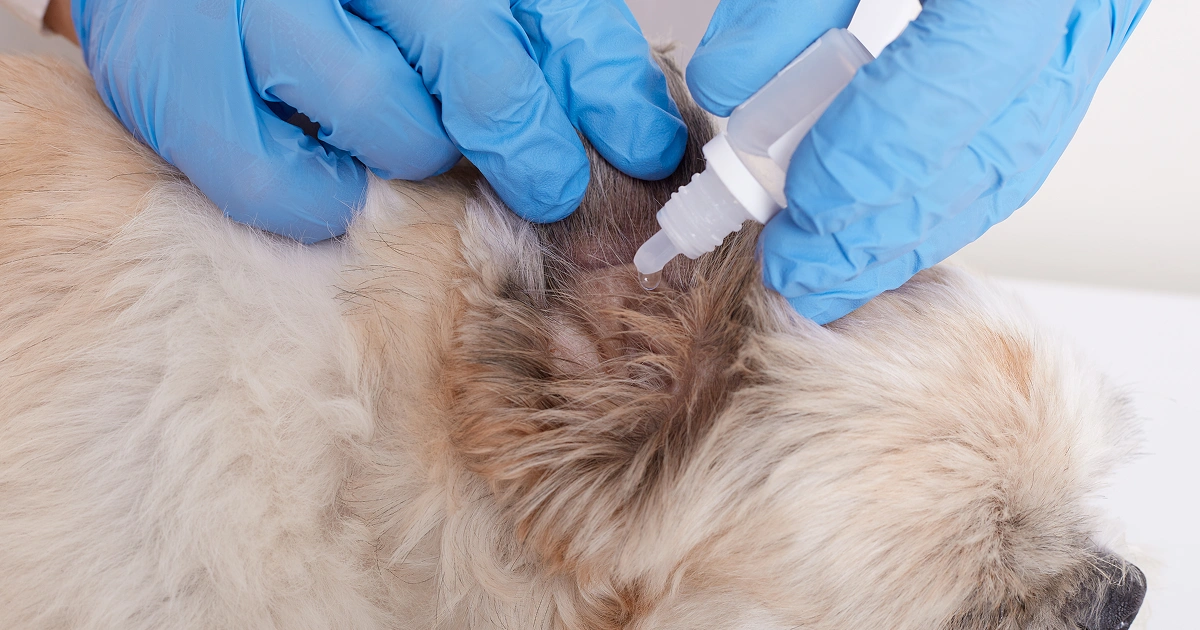
Spending time outdoors with your dog can be a lot of fun and a great way to get some fresh air and exercise. Many dogs enjoy exploring new areas, sniffing trees and bushes, climbing hiking trails, running in open spaces, and rolling in the warm grass. However, this can also increase their risk of picking up ticks along the way.
Unlike fleas, ticks don’t jump. They climb up to the ends of tall blades of grass, leaves, or branches and grab on as you or your pet brush past. Once they get onto your dog’s fur, they’ll make their way down to their skin where they bite and feed. This can be dangerous because ticks can transmit various diseases, some of them potentially fatal. It is essential to regularly check your dog for ticks and remove them as soon as possible.
Preventing Ticks
One of the best ways you can prevent ticks from biting and transmitting diseases is to consistently administer a flea and tick prevention program. You can get medication in many forms such as topical ointments, pills, chewable tablets, and collars. Talk to your veterinarian about what the best option for your dog may be.
Other steps you can take include:
- Keeping your grass and bushes trimmed and removing any branches or debris that may be laying on the ground.
- Avoid walking in wooded areas with high grass or dense brush.
- Thoroughly brush your pet’s fur before you come inside to remove any ticks that may not have attached yet.
Checking for Ticks
Most ticks are black or brown, and they can vary in size from a grain of sand to a sesame seed or larger. You can generally feel a small bump on your dog’s skin where a tick is located, and you should visually inspect their skin as well.
Key areas to check include:
- In and around your dog’s ears
- In their armpits and groin
- Under their tail
- Between their toes
- In any folds of skin
Early detection is key to reducing the spread of disease, so check your dog often, especially if you spend a lot of time outdoors or in areas where ticks are prevalent.
Removing Ticks
You want to safely remove ticks as soon as possible. If you find one, use a tick removal tool or a pair of tweezers (not your fingers!) to firmly grasp the tick as close to the head as you can get and pull straight up. Be careful not to squeeze too hard or wiggle the tweezers from side to side because you don’t want to squish the tick or accidentally detach the head.
Do not try to detach the tick by heating it with a match or lighter. You are likely to do more harm than good and could end up accidentally burning your dog’s skin or fur. Avoid using petroleum jelly, nail polish, or other substances to try to suffocate the tick and get it to back out, as that can actually cause it to release more toxins into your dog’s body.
Once it has been removed, gently clean the area with soap and water and apply a triple antibiotic cream. Pay attention to signs of infection such as redness, warmth, or oozing. If you think you detached the head and it is still lodged in your dog’s skin, contact your veterinarian.
Keep Your Dog Well Groomed
Keeping your dog’s fur neatly trimmed and combed can make it easier to identify and remove ticks from your pet’s coat. It will be harder for ticks to hide under any tangles or matted fur. Schedule your dog for regular bathing, grooming, and styling at Lake Wylie Pet Resort by contacting us today! Don’t forget that you can have your dog groomed while they are being boarded so they are fresh and clean when you pick them up.




